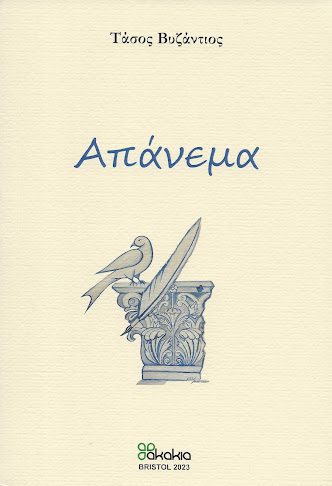skip to main |
skip to sidebar
Greek College of Oxford
The Greek College was a short-lived attempt to create
a space for Greek students at the University of Oxford.
The Greek College, established in 1699, was a
short-lived attempt to create a separate learning institution for Greek Orthodox students at the University of Oxford, England
during the 17th century, when there was regular contact between Eastern
Orthodoxy and the various Protestant churches.
During the seventeenth century and the first quarter
of the eighteenth, Anglicans showed considerable interest in the Greek church,
and this interest was reciprocated. In 1616, Cyril Lucaris, then Patriarch of
Alexandria, commended a young priest, Metrophanes Critopoulos, to the
Archbishop of Canterbury.
At his own expense, Archbishop George Abbot sent
Metrophanes to Oxford to study theology at Balliol College. On his return east,
Metrophanes, in spite of an unfavorable report from Abbot, continued to enjoy
the praise of Cyril Lucaris and rose to be, in his turn, the Patriarch of
Alexandria.
That Metrophanes was not the only Greek who wanted to
study in England at that time is shown, for instance, by an appeal made in 1621
to the king, the Archbishop of Canterbury, and the Bishop of London by two
others—Gregory, Archimandrite of Macedonia, and Katakouzenos, who asked to be
sent to Oxford to study philosophy and theology.
Nathaniel Conopius, another protege of Lucaris, who
fled from Constantinople when his patron was murdered, was also at Balliol and
was expelled from there by the Puritans in 1648.
In 1676, the Archbishop of Samos, Joseph Georgirenes,
went to England and built a church in Soho Fields for the Greek community
in London. He then visited Oxford in July 1677 to raise money
for the completion of that church. Anthony Wood, a celebrated English historian
and antiquary, wondered whether the Archbishop was not also in Oxford in
connection with a scheme for creating a Greek college in the city at Gloucester
Hall.
“At that time,” wrote Wood, “there was great talk of
converting Gloucester Hall into a college for the educating of 20 or 30 Greeks
in Academical learning.” In any case, it was Georgirenes who wrote a letter to
William Sancroft, Archbishop of Canterbury, apparently around 1682, in which he
requested that about twelve scholars from Greece constantly be in England “to be instructed
and grounded in the true doctrine of the Church of England, whereby they may be
able dispensers thereof, and so return into Greece aforesaid to preach the
same.”
The highest levels of the Anglican hierarchy appeared
to show some sympathy and interest in the proposal for a Greek college.
However, nothing more came of the initial idea or discussions for the next ten
years.
Then, early in 1692, the idea reappeared under Dr.
Benjamin Woodroffe, the Canon of Christ Church College in Oxford. His interest
in the Greek Church can be traced as far back as his twenties. He was allegedly
behind the scheme mentioned by Anthony Wood, as discussed in Oxford in 1677,
for creating a Greek college at Gloucester Hall.
Gloucester Hall had for years been in a state of
decay. Under the principalship of Dr. Byrom Eaton, it had become empty of any
students, and its buildings had fallen into disrepair. Now, on August 15, 1692,
Woodroffe became the principal. Workmen began making repairs on the buildings
immediately.
August 15th was a Monday, and on the following
Saturday, the new principal wrote to Edward Harley, the 2nd Earl of Oxford,
about the Greek scheme. He wanted to interest the Levant Company (Company of
Turkish Merchants) in it as soon as possible.
In fact, before the month of August was over,
Woodroffe appeared before the Court of the Levant Company, explained the
scheme, and got the court’s grant of free passage on the company’s ships for
Greek students.
Within six weeks of his institution, Woodroffe’s
scheme for a Greek college hall had taken shape. Twenty famous Greeks were sent
from Antioch and Constantinople to reside at the college.
Gloucester Hall was not, however, intended to be just
a Greek college. Ordinary Oxford undergraduates were to live there, too. From a
blueprint for the hall that Woodroffe sent to Harley in February 1693, it is
evident that while the Greeks were to be accommodated in one part of the hall
and the ordinary undergraduates in another, both parties were to share in the
use of the hall, chapel, and library.
The Greek scheme seemed to be off to a racing start,
but after this initial thrust, nothing seemed to have happened for a long time.
In fact, the scheme was lampooned in Latin elegiac verse, which compared the college to an Oxford
ale-house called Rump Hall, making fun of the fact that the Greek scheme was
hanging fire and the students showed no sign of coming. This was in June 1693.
The first students to receive free passage from the
Levant Company did not arrive until early in 1699.
The project eventually failed in 1705 due to the
objections of the Greek Orthodox Church. There are only fifteen Greeks reported
as members, although Greeks attended Oxford both before and after the existence
of the college.
By Matthew
Norman
SOURCE: Greek Reporter












































No comments:
Post a Comment